15 Flowering Shrubs That Add Color to Your Fall Garden
As the weather cools, your garden does not have to lose its charm. Several flowering shrubs are perfect for adding warmth and color to your fall garden. These shrubs create a stunning contrast against the autumn backdrop. If you want your garden to continue thriving through the fall, these plants are worth considering.
This post may contain affiliate links, which helps keep this content free. Please read our disclosure for more info.
Japanese Anemone
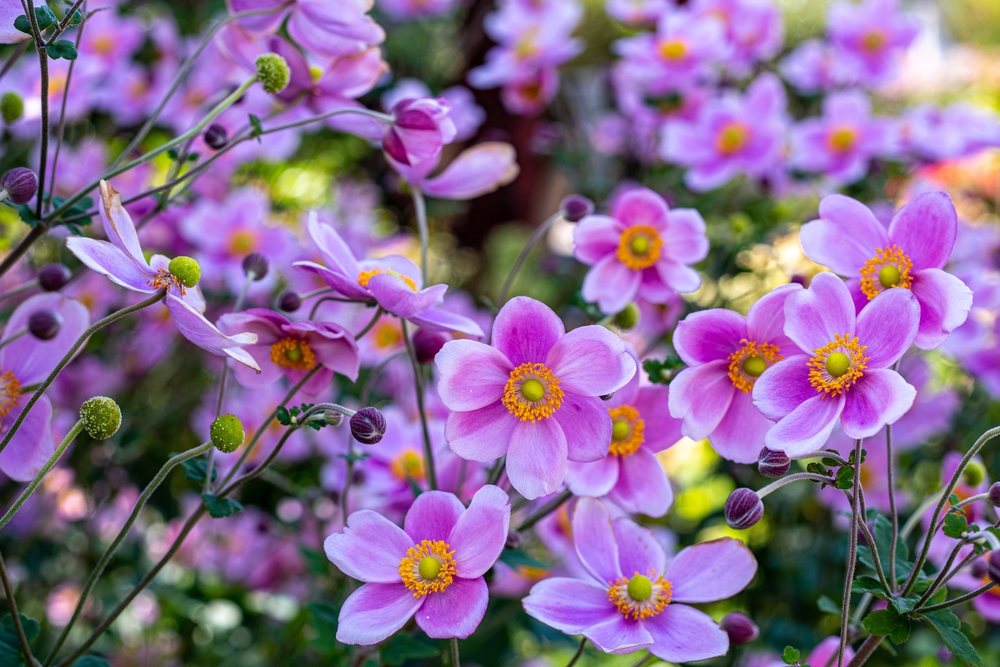
Japanese anemone is a fall-blooming shrub that brings an elegant touch to any garden. Its delicate, white or pink flowers bloom from late summer through autumn, adding a soft contrast to the autumn landscape. These plants thrive in partial shade and tolerate a variety of soil types. With their graceful flowers, they make excellent border plants or additions to woodland gardens.
This shrub grows to about 2 to 4 feet tall and prefers moist, well-drained soil. Japanese anemone is relatively low-maintenance, making it a great choice for beginner gardeners. It is a perfect option for those who want a reliable fall bloom without much fuss. These plants are also attractive to pollinators like bees, which further enhances their garden appeal.
Spirea
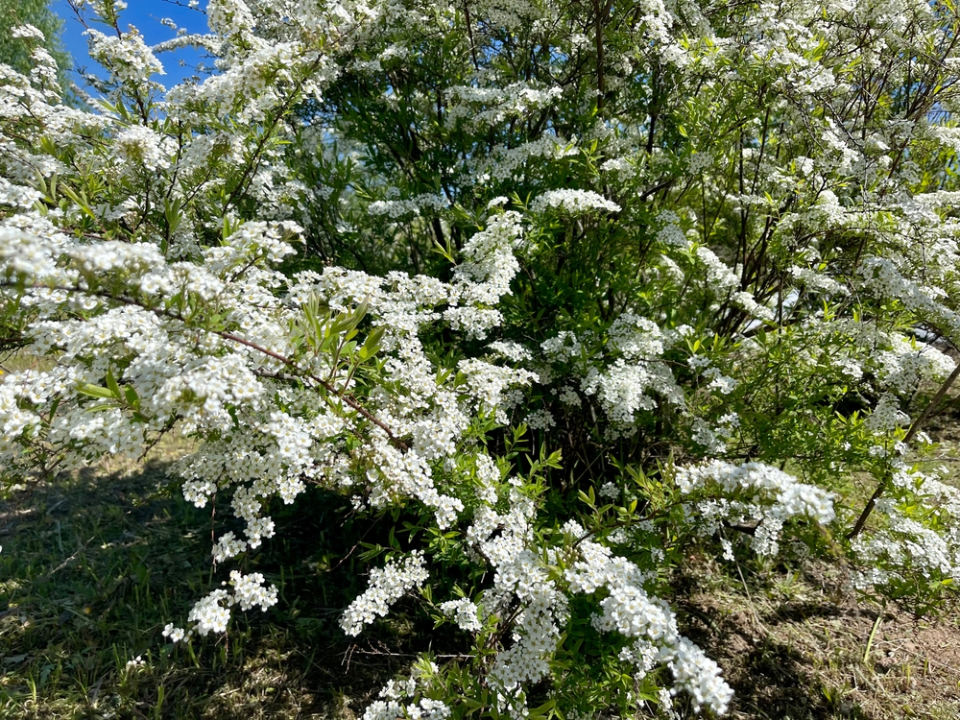
Spirea is a versatile shrub known for its colorful fall foliage and vibrant blossoms. In the fall, its leaves transform into shades of red, orange, and yellow, creating a beautiful backdrop for the bright pink, white, or red flowers. This shrub thrives in full sun and can adapt to a range of soil types. It makes an excellent choice for hedges or mass plantings.
Spirea is a fast-growing shrub that can reach heights of 3 to 6 feet, depending on the variety. It is drought-tolerant once established and can handle a range of climates. Pruning after blooming helps maintain a tidy shape and encourages even more blooms. With its long blooming season, spirea is a reliable shrub for adding both color and texture to your fall garden.
Chrysanthemum (Mum)
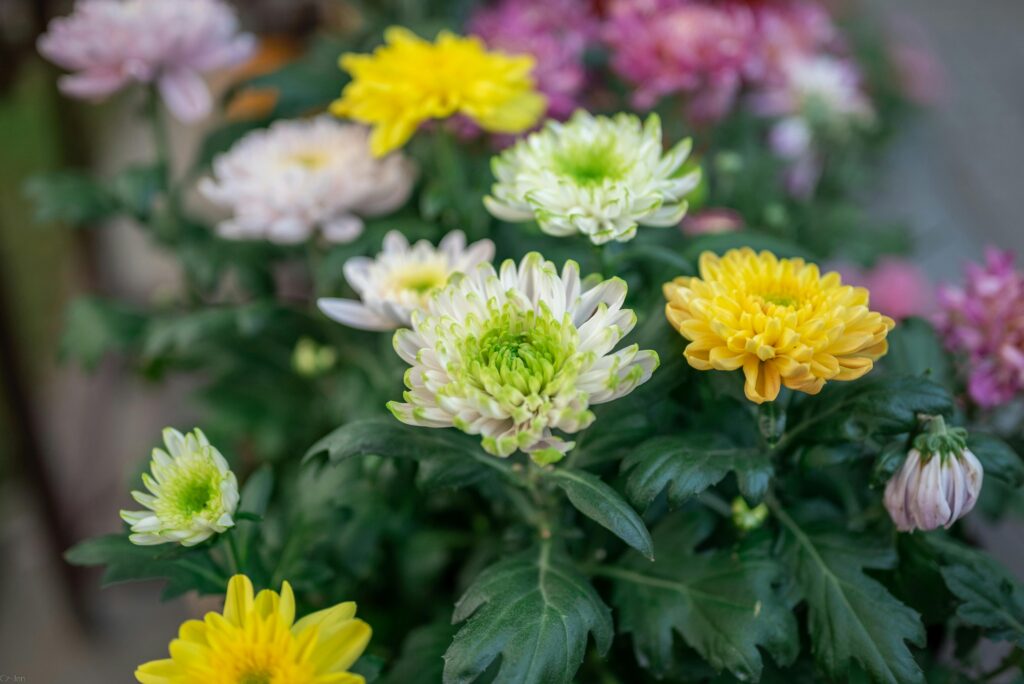
Chrysanthemums are one of the most popular flowering plants for the fall garden. Known for their vibrant, bold blooms, they come in a variety of colors such as yellow, red, and purple. These flowers start blooming in late summer and continue through autumn, making them a standout in fall garden displays. Mums thrive in well-drained soil and full sun, providing a striking focal point in any garden.
Beyond their color, mums are low-maintenance and easy to grow. They prefer to be watered regularly but do not like to sit in waterlogged soil. These plants can grow up to 3 feet tall, and their bushy form adds fullness to flower beds. Chrysanthemums are an essential part of any autumn landscape, brightening up gardens as the weather cools.
Beautyberry (Callicarpa)
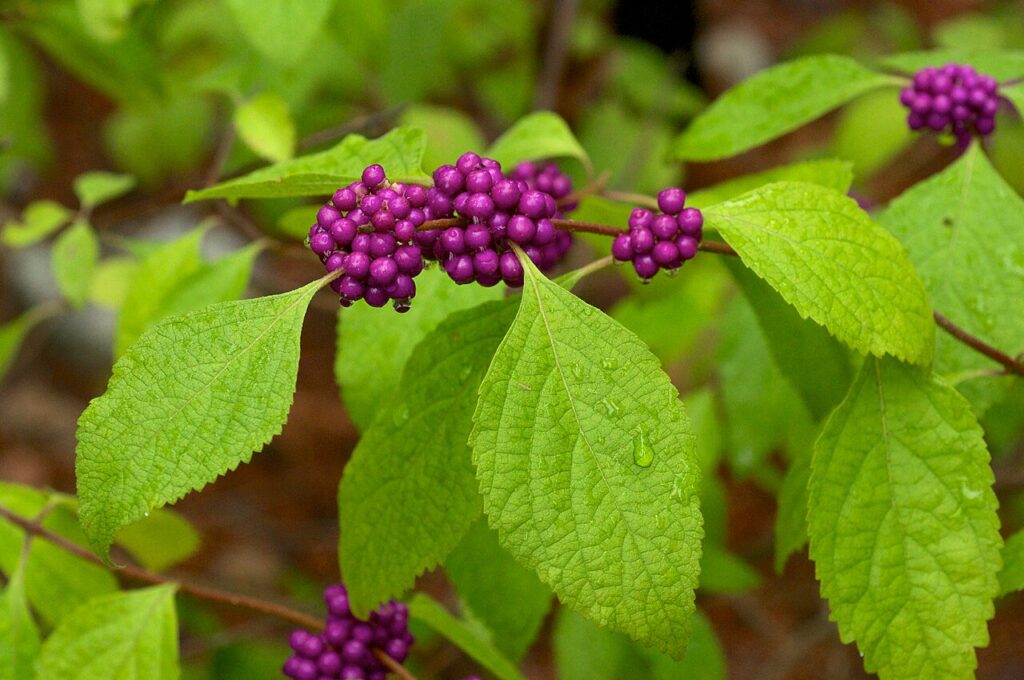
Beautyberry is a deciduous shrub known for its stunning purple berries that appear in fall. While its flowers are small and unassuming, it is the bright, clustered berries that make this plant truly special. The shrub itself can reach up to 6 feet in height and 6 feet in width, making it a great addition to borders or as a specimen plant. It thrives in full sun to partial shade and tolerates a range of soil conditions.
The purple berries of the beautyberry shrub are not only visually striking, but they also attract birds, adding to the wildlife-friendly nature of the plant. This shrub has a fast-growing habit, making it an excellent choice for gardeners looking for quick results. In addition to its colorful fruit, the foliage turns a lovely yellow in the fall, providing a second layer of seasonal interest. Beautyberry is a perfect shrub for those looking to add both color and wildlife value to their fall garden.
Rose of Sharon (Hibiscus syriacus)
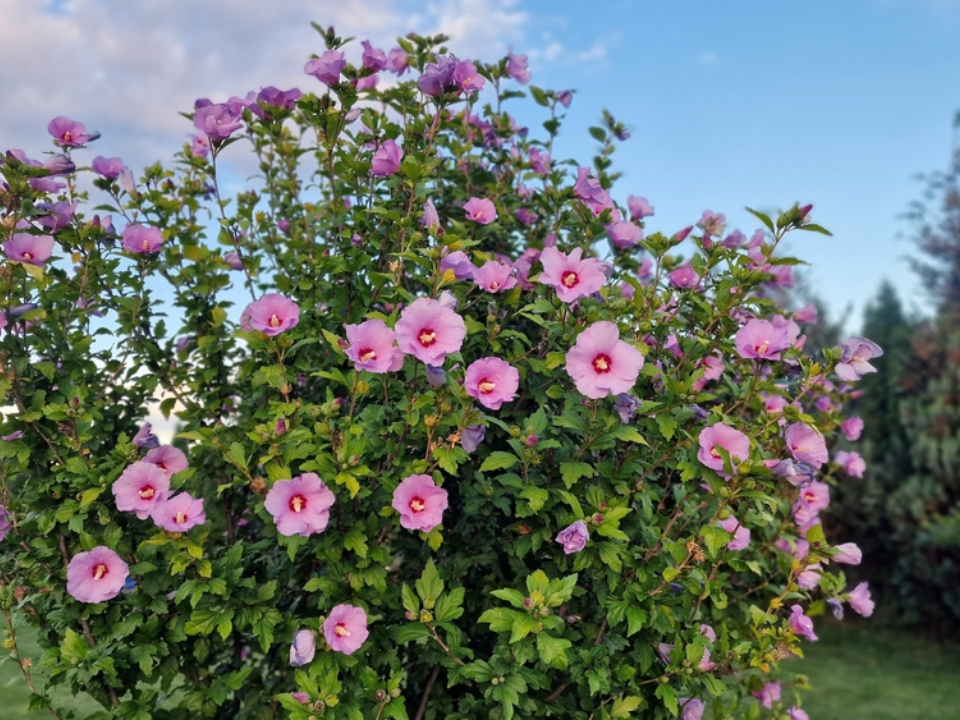
Rose of Sharon is a hardy flowering shrub that blooms profusely during the late summer and fall months. Its large, showy flowers come in colors like pink, purple, white, and red, creating a bold contrast against the green foliage. This plant thrives in full sun and well-drained soil, making it a versatile option for many gardens. It can reach heights of up to 8 feet, making it an excellent choice for creating privacy screens or focal points.
In addition to its striking blooms, the rose of Sharon is relatively low-maintenance. It tolerates drought and poor soil conditions once established, making it a hardy addition to any garden. Pruning after flowering helps maintain its shape and encourages more blooms. This shrub is a reliable performer in fall gardens, offering lasting color and beauty.
Asters
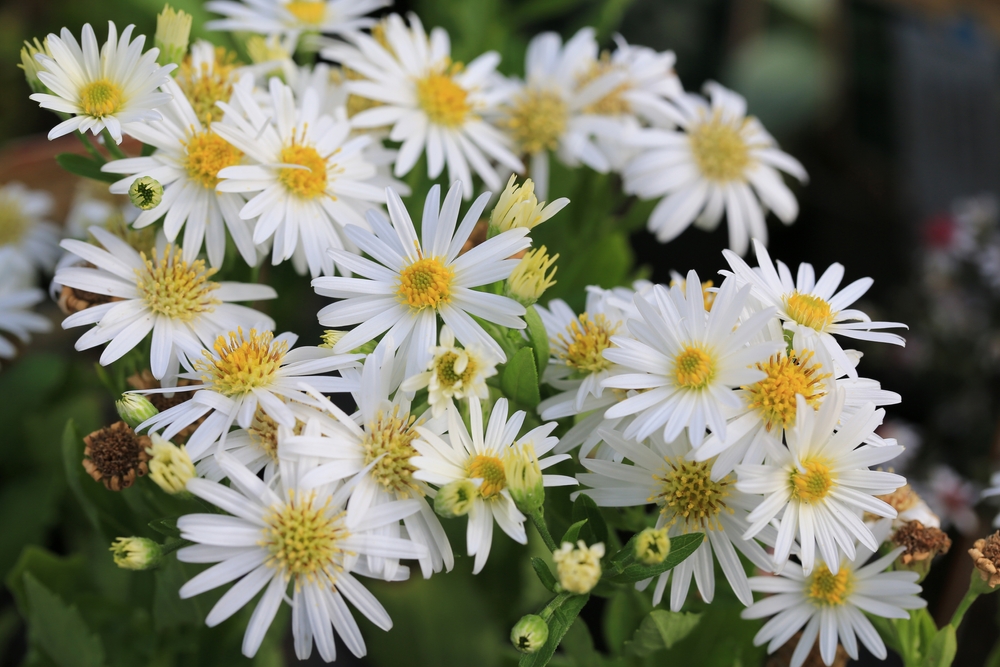
Asters are a staple in the fall garden, providing a burst of color when many other plants are winding down for the season. These shrubs come in shades of purple, blue, pink, and white, adding a soft, yet vibrant, touch to any garden. They bloom from late summer into fall, with flowers that attract pollinators like bees and butterflies. Asters thrive in full sun and well-drained, slightly acidic soil.
Typically growing to about 2 to 4 feet tall, asters are perfect for adding height and texture to flower beds. They are drought-tolerant once established and require little maintenance. Asters can be divided every few years to maintain their health and vigor. Their vibrant colors and ability to withstand cooler temperatures make them an excellent choice for extending your garden’s bloom season well into autumn.
Red-twig Dogwood (Cornus sericea)
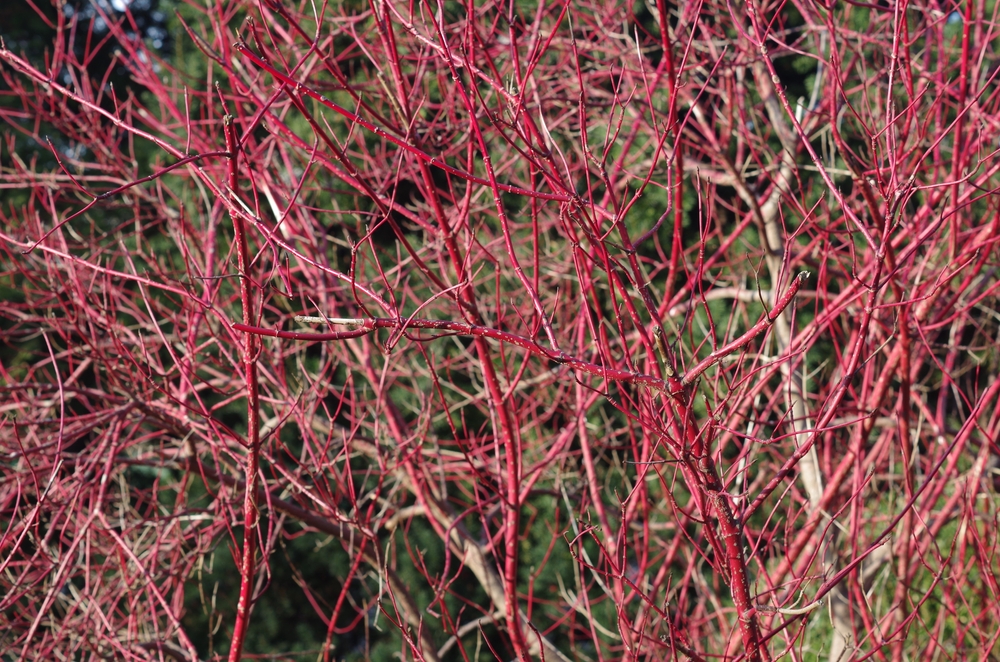
The red-twig dogwood is a deciduous shrub that adds rich, red stems to the garden in fall. While its flowers are not particularly showy, its striking red bark steals the show, particularly in winter. This shrub grows well in full sun to partial shade and prefers moist, well-drained soil. The plant’s white flowers appear in late spring to early summer, but its fall color and winter appeal are what truly set it apart.
In addition to its beautiful red stems, the red-twig dogwood offers good wildlife value, attracting birds and beneficial insects. It can reach up to 6 feet tall and 8 feet wide, making it perfect for creating dense, colorful hedges or shrub borders. Its ability to thrive in wet conditions also makes it a great choice for rain gardens. This shrub provides year-round interest, from its flowers in spring to its stunning red stems in fall and winter.
Camellia (Camellia japonica)
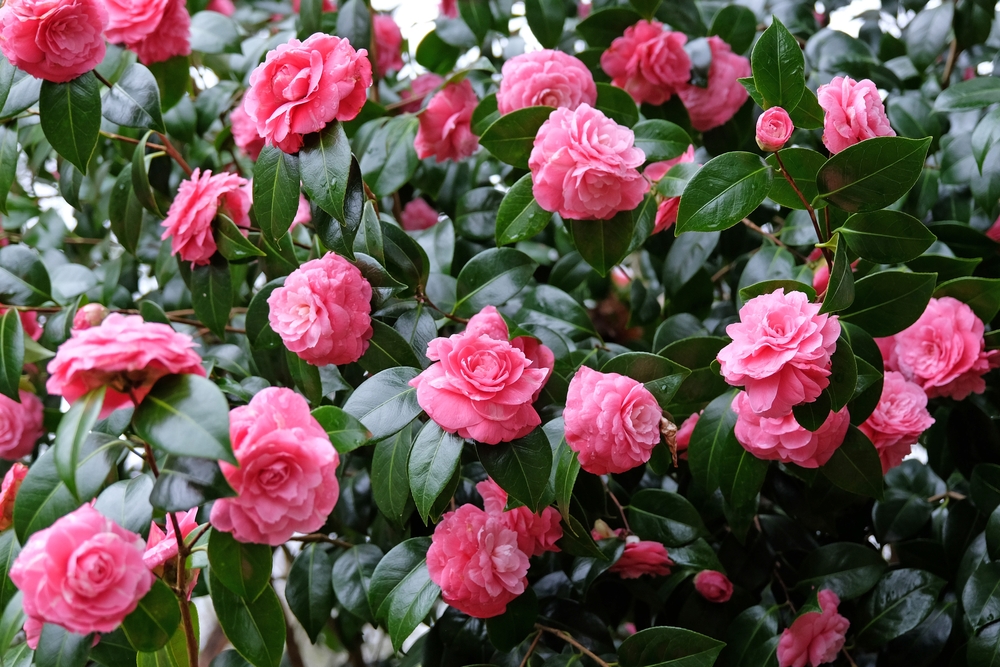
Camellias are evergreen shrubs that provide stunning blooms well into the fall and winter months. These plants are known for their glossy green foliage and large, showy flowers, which come in shades of white, pink, and red. They thrive in partial to full shade, making them perfect for shaded corners or woodland gardens. Camellias can grow up to 6 feet tall and 5 feet wide, adding structure and beauty to the garden.
The blooms of the camellia appear in late fall to early winter, offering a refreshing splash of color during the colder months. They prefer acidic, well-drained soil and benefit from regular watering. Once established, camellias require little maintenance and can withstand occasional drought. Their longevity and year-round beauty make them a valuable addition to any garden.
Hydrangea (Hydrangea paniculata)
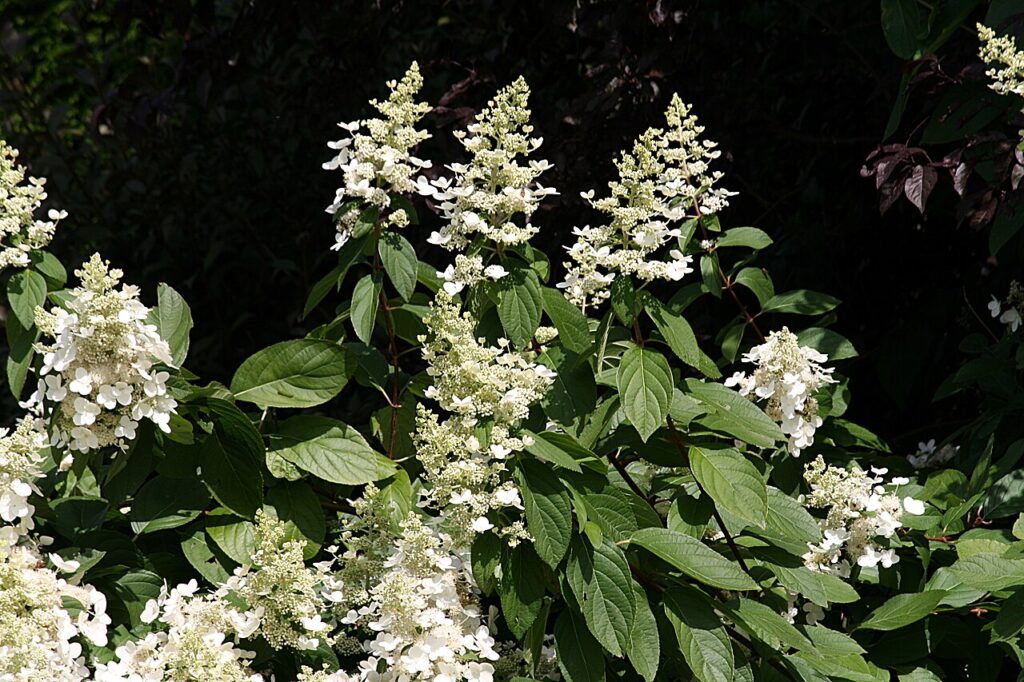
Hydrangeas are known for their large, globe-like clusters of flowers that come in shades of white, pink, and blue. Certain varieties, like the paniculata type, bloom late into the fall, with their flowers gradually turning deeper shades of pink and red. Hydrangeas prefer well-drained, moist soil and thrive in partial shade, making them suitable for a variety of garden conditions. With proper care, they can reach 4 to 8 feet in height, providing excellent coverage and color in the garden.
The paniculata hydrangea is particularly noted for its hardiness, making it a great choice for colder climates. These shrubs require occasional pruning to maintain shape and encourage more blooms. Hydrangeas are also attractive to pollinators, adding both beauty and ecological value to your garden. Their versatility and long blooming period make them a must-have for fall garden enthusiasts.
Sweetspire (Itea virginica)
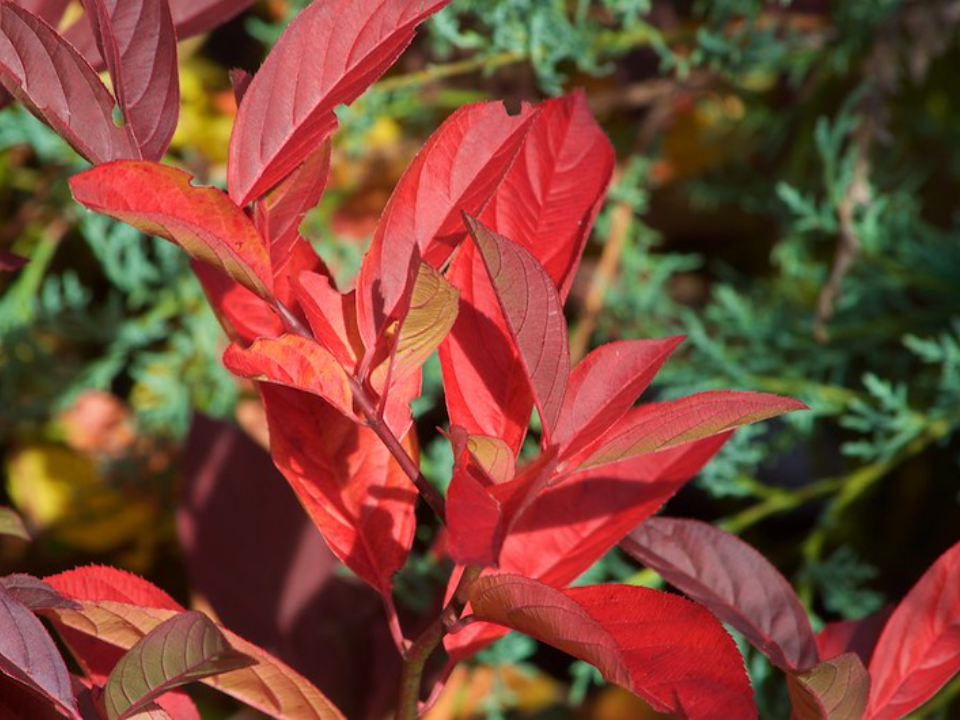
Sweetspire is a native shrub that offers both ornamental beauty and environmental benefits. Its fragrant white flowers bloom in late spring to early summer, while its foliage turns a brilliant red in fall, adding a burst of color to the garden. Sweetspire thrives in full sun to partial shade and prefers moist, well-drained soil. This shrub typically grows 3 to 5 feet tall, making it perfect for creating borders or adding texture to a mixed shrub bed.
In addition to its colorful fall foliage, sweetspire is also known for its fragrant blooms, which attract bees and butterflies. This low-maintenance shrub tolerates a range of soil conditions and is highly drought-tolerant once established. Sweetspire is also effective in erosion control, making it a great choice for slopes or hillsides. Its beautiful colors and adaptability make it an excellent addition to any fall garden.
Winterberry Holly (Ilex verticillata)
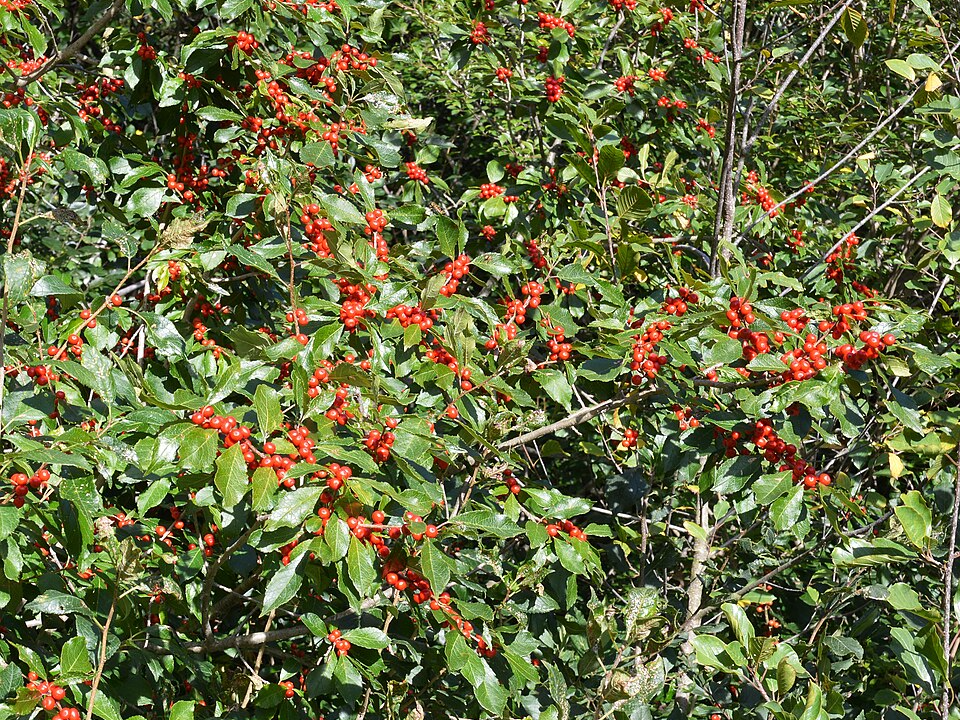
Winterberry holly is a deciduous shrub that offers striking red berries in the fall, adding a pop of color to the winter landscape. While it does not produce flowers in the fall, its vibrant berries are an essential part of any winter garden. This shrub prefers full sun to partial shade and thrives in moist, acidic soil. It can reach heights of 6 to 8 feet, making it perfect for creating hedges or adding structure to garden beds.
The bright red berries of the winterberry holly attract birds, providing valuable wildlife habitat. This shrub is hardy and easy to care for, requiring little maintenance once established. It is also highly resistant to pests and diseases, making it a reliable choice for any garden. Winterberry holly’s ability to add color during the cold months makes it a standout shrub for fall and winter interest.
Fothergilla
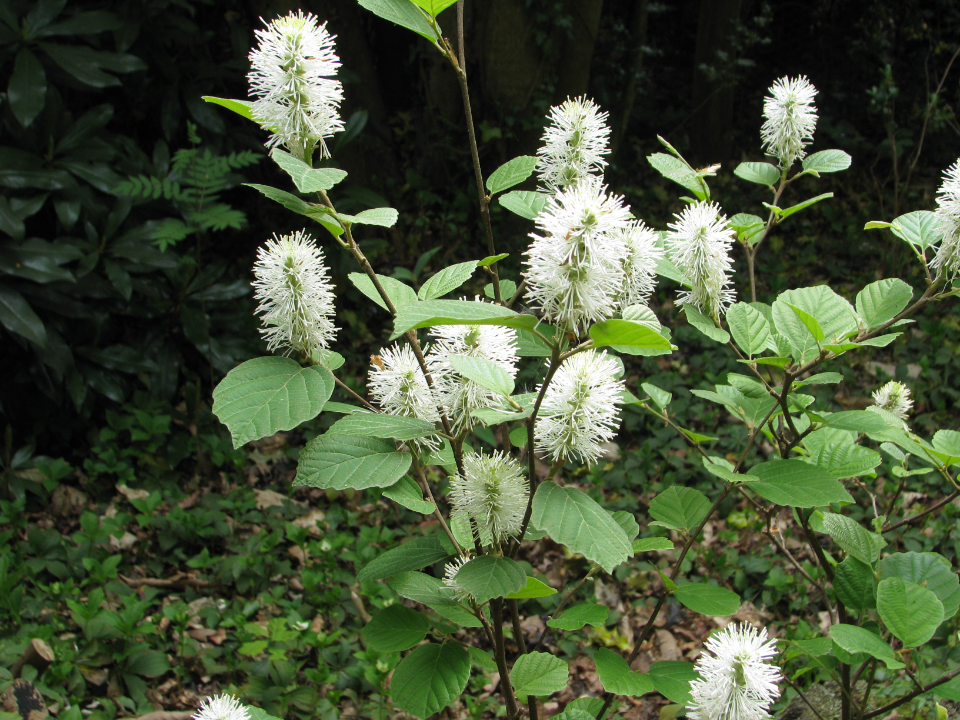
Fothergilla is a deciduous shrub known for its stunning fall foliage. During the fall, its leaves turn shades of yellow, orange, and red, making it a perfect shrub for adding seasonal color to your garden. Fothergilla thrives in full sun to partial shade and prefers moist, acidic soil. It typically grows between 3 to 5 feet tall, making it ideal for smaller gardens or as a specimen plant.
In addition to its fall color, fothergilla produces fragrant white flowers in spring, adding seasonal interest throughout the year. This shrub is easy to grow and requires minimal maintenance. It is also resistant to most pests and diseases, making it a great choice for low-maintenance gardeners. Fothergilla’s multi-season appeal makes it a valuable addition to any fall garden.
Witch Hazel (Hamamelis virginiana)
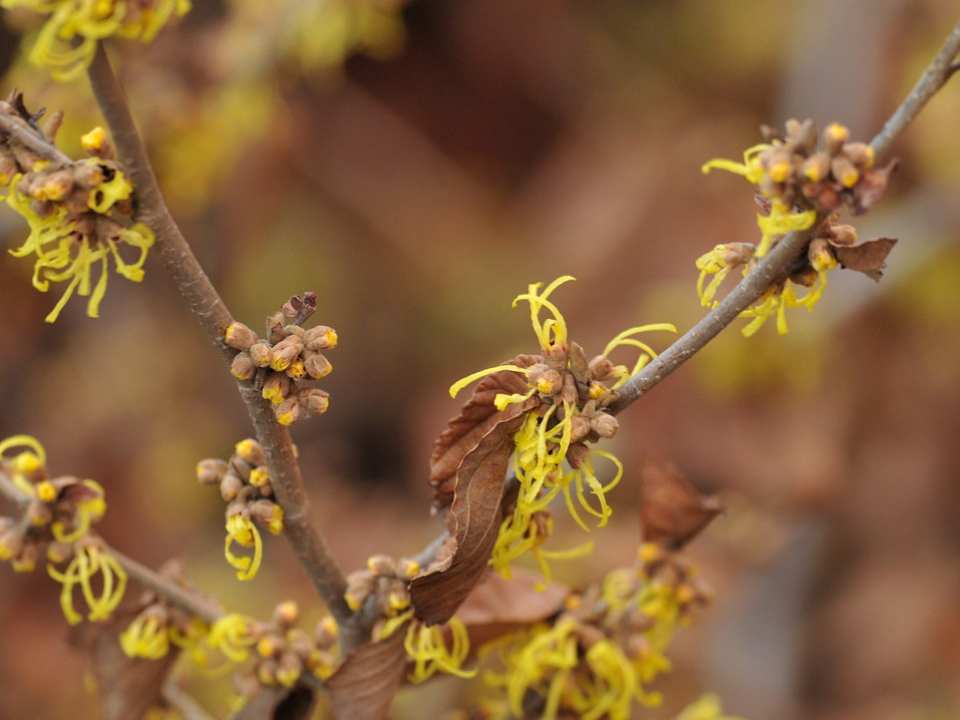
Witch hazel is a unique shrub that blooms in late fall to winter, offering bright yellow or orange flowers that are both fragrant and showy. It thrives in partial shade and well-drained, acidic soil, making it ideal for woodland gardens or shaded areas. Witch hazel can grow 10 to 20 feet tall, adding both height and color to your garden. Its striking flowers appear on bare branches, providing a dramatic contrast against the fall and winter landscape.
Beyond its beautiful flowers, witch hazel is also valued for its medicinal properties, with its bark and leaves often used in herbal remedies. This shrub requires minimal care once established and is known for its resistance to pests. It is also a great choice for attracting pollinators like bees and butterflies. Witch hazel is a standout shrub that continues to impress with its beauty and versatility.
Smoke Bush (Cotinus coggygria)
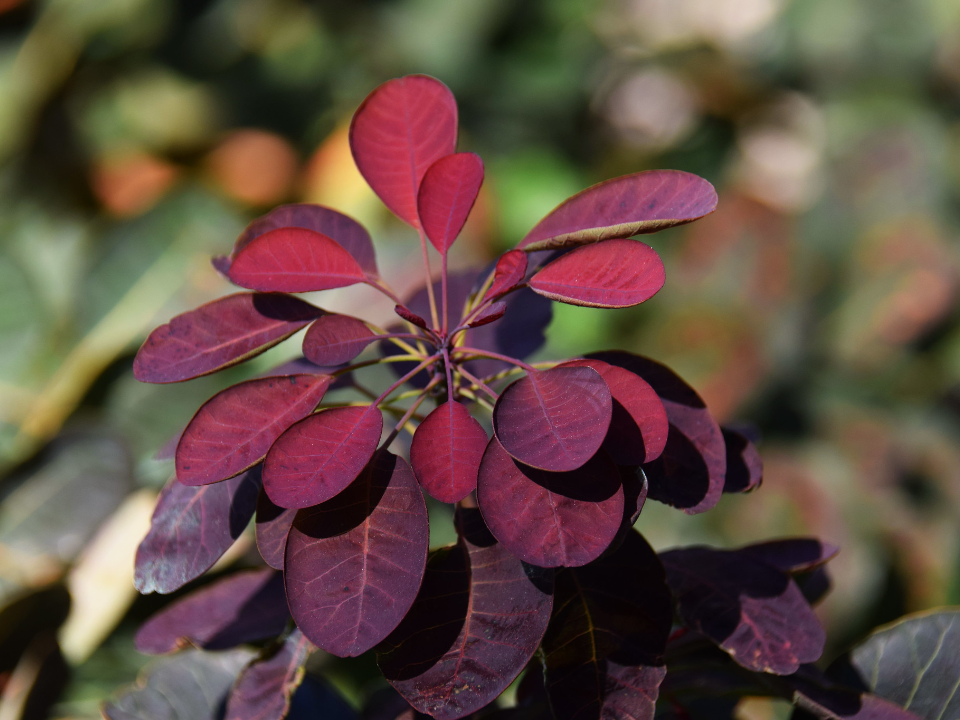
Smoke bush is known for its dramatic foliage and unique, smoky flowers. In the fall, its leaves turn brilliant shades of red, orange, and purple, creating a stunning display in the garden. The shrub gets its name from the cloud-like clusters of pink or purple flowers that appear in late summer to early fall. Smoke bush thrives in full sun and well-drained soil, growing up to 10 feet tall.
The smoke bush’s vivid fall colors make it a perfect addition to gardens looking to add a touch of drama. Its flowers are not only beautiful, but they also attract butterflies, adding an extra layer of interest. This shrub is drought-tolerant once established and requires minimal pruning. The rich colors and unique appearance of smoke bush make it a favorite for gardeners looking to create a striking fall display.
Burning Bush (Euonymus alatus)
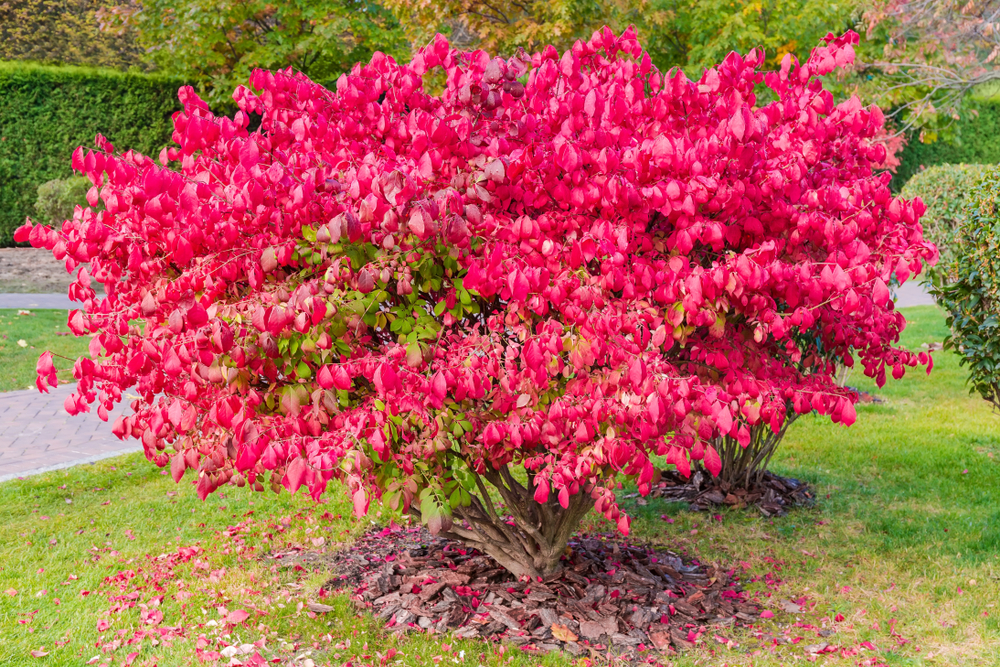
Burning bush is well-known for its fiery red foliage in the fall. As the weather cools, the leaves turn vibrant shades of red, making it one of the most eye-catching shrubs for autumn. This shrub grows best in full sun to partial shade and can reach heights of 6 to 8 feet. It is an excellent choice for creating hedges or adding color to mixed shrub beds.
In addition to its striking red leaves, burning bush is a hardy plant that thrives in a variety of soil types. It is relatively low-maintenance and resistant to pests and diseases. However, it can become invasive in some regions, so it is important to manage its growth. Its fiery fall color makes it a standout choice for gardeners looking to add bold hues to their autumn garden.
This article originally appeared on Avocadu.
